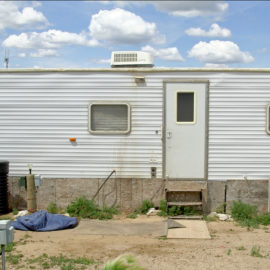
After a hurricane some have to rebuild. But at what cost of the insurance? It just went up and Ian is causing a new look.
Hurricane Ian’s destruction in Florida is likely to spark renewed debate on drastic changes to the country’s flood insurance system, which is leading to major increases for many in Louisiana, New Orleans area economic boosters said Friday. The comments came at the release of a new study on the flood insurance overhaul that warns of potential harm to Louisiana, attended in person or virtually by a range of state and local officials. The study was carried out by the Coalition for Sustainable Flood Insurance, established by regional economic development organization Greater New Orleans Inc. The study delves deeper into issues that state and local officials have been raising for months. They include concerns over affordability, worries that large numbers of residents will drop their coverage because of the increases, and a lack of transparency on the changes from FEMA, which oversees the National Flood Insurance Program. Concerned the changes could dramatically reshape parts of the housing market in south Louisiana – potentially pricing out working-class families or leading to foreclosures – the coalition has been trying to build national support to roll back aspects of the new system. It presented the study to the NFIP’s leadership in Washington on Sept. 21. “For those of us who have lived through Katrina, and the storms in Baton Rouge and others and Ida, we don’t wish this on anybody. It’s devastating,” said GNO Inc. head Michael Hecht. “But purely in terms of framing the debate and the politics of it, we also know that Florida, with its population, with its political power and its profile, experiencing Ian … is going to reframe the debate on flood insurance.” Hecht pointed to how Hurricane Sandy, which flooded New York City in 2012, helped focus attention on an earlier bid to rework NFIP premiums under a law known as Biggert-Waters. Parts of that law were eventually repealed.
nola.com
The system is broke and insurers are leaving both Louisiana and Florida as they can’t make payments.
The flood insurance overhaul is known as Risk Rating 2.0. It aims to have the NFIP set rates in line with actuarial practices used in the private sector, which would help the program address its roughly $20 billion debt. That means evaluating the risks of each individual home rather than using the old system largely based on FEMA’s flood maps. A wide range of factors, including rebuilding cost, distance to water and elevation, are fed into a complex algorithm that calculates premiums. FEMA defends it by saying it will be fairer for all, doing away with a system that resulted in older, modest homes essentially subsidizing premiums for newer, pricier beachfront houses. But there are deep concerns over unintended consequences in south Louisiana, where everyone lives near water of some kind. Louisiana has the nation’s highest participation rate in the NFIP. FEMA has released limited data on the increases, providing only first-year numbers under the new system. But because increases are limited to 18% annually, that masks the overall impact. Those annual increases will continue until homeowners reach their “target” rate under the new system, compounding dramatically over time in some cases.
Part of the problem with FEMA is there is no transparency. How were the rated generated? The computer did them.
The Times-Picayune | The Advocate, through a public-records request, obtained FEMA’s projections of Louisiana’s “full risk premiums.” They show that Louisiana homeowners will eventually see 122% increases on average under Risk Rating 2.0, phased in over multiple years. Parts of flood-prone southeast Louisiana are likely to see far larger jumps; intensified storms due to climate change could also cause further increases. The changes began for new policies in October 2021. Existing policyholders began to see them with their first renewal starting in April. New policyholders are not subject to the 18% annual cap and pay the full premium immediately, and that has in some cases led to sticker shock for home buyers in south Louisiana.

What happens when I can afford the house but not the insurance? Do I buy or not?
State Insurance Commissioner Jim Donelon, St. Charles Parish President Matthew Jewell and Jefferson Parish President Cynthia Lee Sheng all warned of the impact the changes could have on Louisiana at Friday’s launch. “Risk Rating 2.0, if it continues the way that FEMA has implemented it, will destroy the housing market in southeast Louisiana, and that will domino onto the greater economy in southeast Louisiana, because people will simply not be able to afford to live here,” Jewell said, while pointing to measures his parish has taken to make St. Charles safer. The study, carried out with the Tambala Strategy consultancy, points to data showing how the increases could weigh on an already heavy burden for homeowners at locations in a variety of states. More than a quarter of Louisiana homeowners with mortgages are already considered housing-burdened, meaning they spend more than 30% of their income on housing costs, it says. Those numbers are significantly higher in Jefferson and Orleans parishes: 37.8% in Orleans and 29.5% in Jefferson. The study recommends lowering the annual cap on increases, offering help to homeowners who can’t afford them and developing a publicly available tool to allow residents to see their rates and correct potential errors in what they’re being charged.
Is not all the money spent to make me safer mean that I am more protected so my insurance should go down?



